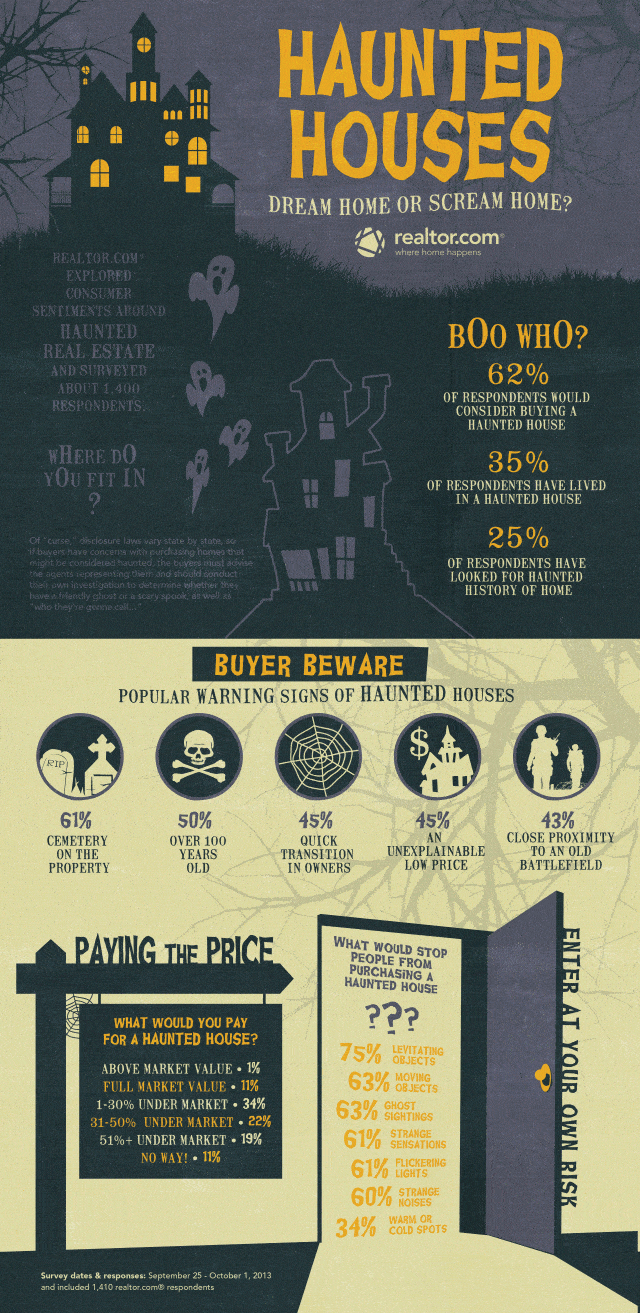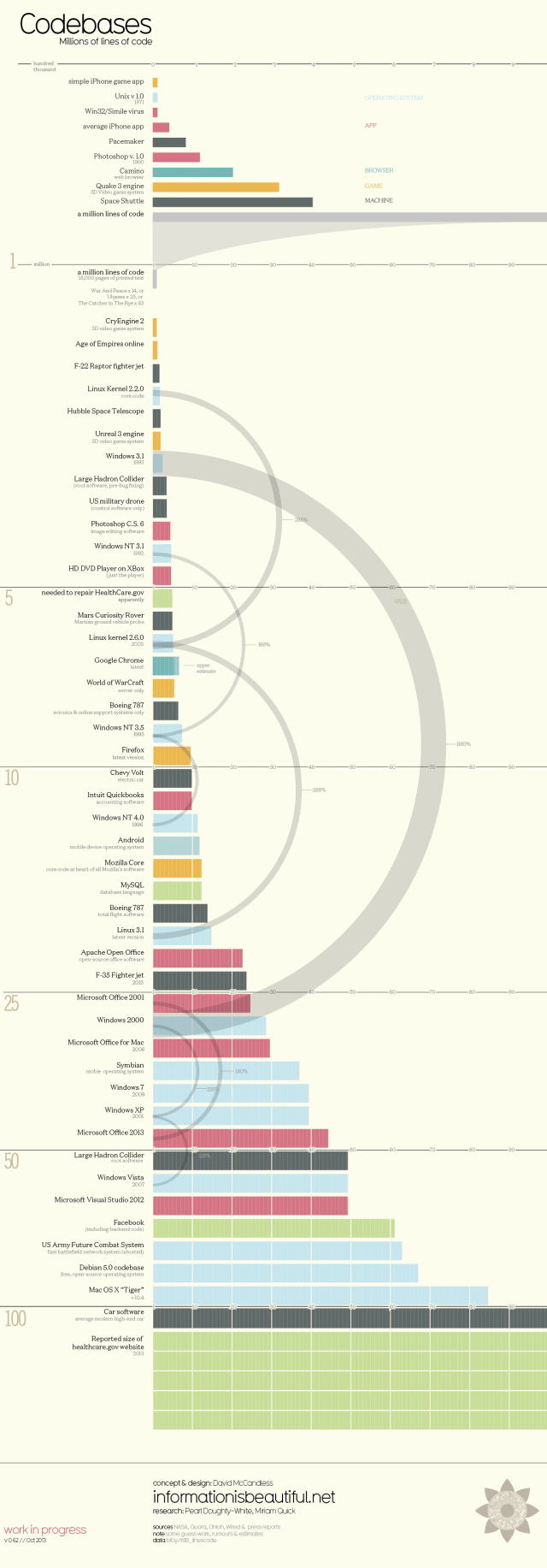Would You Live in a Haunted House? [Infographic]
Many holidays that we celebrate have one or two traditions that truly define them, but they also have many other smaller traditions. Halloween is no exception to the rule: while dressing in costumes and trick-or-treating are the most defining Halloween traditions, we also have things like pumpkin carving, hay rides and haunted houses that are associated with the holiday. Haunted houses can be a lot of fun to visit around Halloween, with all of the decorations and people putting on a scary show, but the question is: would you actually live in one?
Today’s infographic from the Huffington Post and Realtor.com shows us just how many Americans would choose to buy or live in a haunted home, given the choice to do so. Out of those surveyed, 62% would consider buying a “haunted” house while 35% said that they have already lived in one. When asked what would make a house haunted, most agreed that a cemetery on the property would do the trick, although the answers ranged all the way to having an old battlefield near the home.
For more info on buying haunted homes, have a look at the graphic below. [Via]
© Grayson for Daily Infographic, 2013. |
Permalink |
No comment |
Post tags: battlefield, battlefield infographic, cemetery, cemetery infographic, ghost, ghost infographic, ghosts, ghosts infographic, graveyard, graveyard infographic, haunt, haunt infographic, haunted, haunted home, haunted home infographic, haunted house, haunted house for sale, haunted house for sale infographic, haunted house infographic, haunted houses, haunted houses infographic, haunted infographic, house is haunted, house is haunted infographic, spirit, spirit infographic, spirits, spirits infographic, what makes a haunted house, what makes a haunted house infographic




